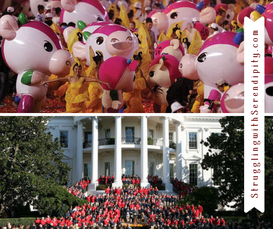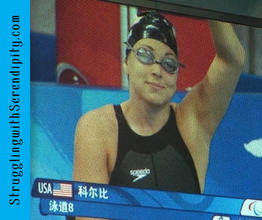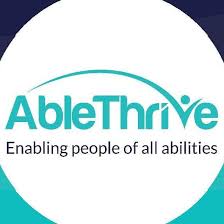|
Dear Readers: The end of 2019 approaches as my story segments also come to an end. I began this weekly blog about four years ago to introduce my story. Thanks so much for your positive responses and overwhelming support! I am grateful for each and every one of you, old friends and new.
Subscribers will continue to receive my popular Serendipity Newsletter on the first Thursday of every month. The final story segment that follows takes place in 2010, ten years after Beth’s injury. My memoir, Struggling with Serendipity, continues from that segment in 2010 to the end of 2018. My book has much more than my blog, including a disability resource guide, a Harvard doctor’s foreword, Beth’s letter to readers, spinal injury facts, and a book club discussion guide, as well as an offer to attend your book club meetings, in person or virtually. I look forward to connecting with you each month in my Serendipity Newsletter. Look for new adventures! Thank you, Cindy ❤️ Here is my last story blog: Her first year at law school, Beth received an email from one of the young women she mentored about a scholarship fund for physically challenged athletes. Thankful for the referral, Beth filled out an application and received help with tuition from the generous Swim with Mike Foundation. At their annual fundraiser at Stanford, she swam a smooth freestyle with friends. Beth enjoyed swimming in heated outdoor pools year-round. “I totally loved law school—and I recognize that’s rare!” Beth said in an interview. “Stanford was a sunny, social place where everyone was brilliant and interesting. I was very involved in the school, eventually becoming class president, and made friendships that are still some of my closest friendships today.” Beth worked on the annual conference for the National Association of Law Students with Disabilities. Elected Vice President at the conference, she bought her first smart phone to check her email more often. She learned to write emails and texts quickly on her phone with her left index finger, relying heavily on spell check. Voice recognition software had improved, but she still preferred to type everything herself. Beth regularly fielded questions from other students around the country. “At first, it was outside my comfort zone. But I enjoyed giving back and being part of organizations that can improve life for students with disabilities,” Beth said. “Disability rights in general is becoming a bigger issue.” As Beth’s 1L year ended, she finalized her 2L schedule, adding Stanford’s Youth and Education Law Project to fight for school services for children with a disability. I helped her clear out her dorm and move stuff into storage. I flew with her to Washington, DC. She shared an apartment for the summer with her boyfriend, each with an internship at different law firms. Beth immersed herself in research for her first law job and also enjoyed time on Capitol Hill with a legal team who lobbied for disability issues. At my request, she carried something to her summer office on a high floor: what they used at her high school during fire drills to carry her down the stairs, an extra vinyl sheet with handles. Never used, left behind, and never replaced. The 10th anniversary of Beth’s injury came and went without notice, except for my new compulsion to write about it. When my job at the nonprofit ended, I began my writing project by researching events and gathering media quotes. The actual writing part was daunting. I wasn’t sure I could do our story justice, but I had to try. Propelled by millions of small choices, time converged—and converges—into more infinitely improbable moments.
6 Comments
Happy Thanksgiving from our family to yours!
My new Holiday Gift Guide is here in my December Serendipity Newsletter! It includes nonprofits and giving back. And here's the next segment of our story: I accompanied Beth to San Francisco to help her move into her graduate dorm at Stanford. The routine of boarding a plane had changed a bit. Beth transferred from her wheelchair to the airline’s aisle chair to get to her assigned row in the airplane, then scooted herself over to the window. Beth reserved the window seat so no one would need to climb over her. I rented a car at the San Francisco airport to transport the extra luggage we carried. The brand-new Munger dorm gleamed with a baby grand piano in the lobby and colorful paintings on the walls. Beth and her three roommates shared a beautiful apartment with a large furnished living room and a huge kitchen with two full-size refrigerators. They each had a separate bedroom with a full-size bed, desk, dresser, and a private bathroom. There was a fifth bathroom for guests off the living room. Tall palm trees and green grass (realistic-looking artificial turf) replaced the dirt between the fancy dorms. As a “1L,” a first-year law student, Beth dove into her studies. She spent extra time preparing for classes with professors who asked questions of random students without warning, cold calling. Some tests required long essays in a short time, and Beth reluctantly asked for additional time to compensate for her ability to type with only three fingers. She volunteered for the law school's pro bono Social Security Disability Project to help people at a homeless shelter obtain monthly payments. “They appreciate that there is someone who is helping them who understands what it's like to be disabled,” Beth said in the National Law Journal. “Anytime anyone has an interesting life experience or has overcome obstacles in the past, they have a different take on things. It's made me more interested in the client perspective.” Next: Lucky charm! My November Serendipity Newsletter includes a hardcover book giveaway!
------ And here's the next blog segment of our story: The inauguration of President Barack Obama began the New Year. Beth and I flew to California for the first time, taking the BART train from the San Francisco airport and the Caltrain to Palo Alto and Stanford. We stayed in a hotel near the Caltrain station and walked to campus. Beth met with staff at the Diversity and Access Office and the law school. A large area under construction near Stanford Law would be the new graduate dorms where she would live. Much closer to classes than when she lived in Harvard’s Quad, with the added advantage of no snow and ice. We walked under the canopy of trees on Palm Drive. Beth reconnected with two Harvard swim team friends who worked for Facebook in downtown Palo Alto. At one of Stanford’s heated outdoor pools, I watched Beth while I returned work-related calls. She put her hair in a ponytail, stretched on a swim cap, and swam freestyle, backstroke, and butterfly laps. Each movement was the result of years of practice. After, she lifted herself out of the pool at the corner to sit on the deck. Shining in the sun, she looked up at me with clear blue eyes and an easy dimpled smile. I wished I could have glimpsed that singular moment after her spinal cord injury. Beth couldn’t move at all in intensive care almost 10 years earlier, a time when no one imagined her swimming laps in January under California's winter sun. She’d also come a long way from floating free in the rehab pool in Green Springs, Ohio. The next day, Beth’s right elbow swelled to the size of a baseball, an occasional recurrence aggravated by any kind of physical stress, extra wheeling or swimming or maybe getting bumped the wrong way. On our flight back to Boston, I suggested a power wheelchair to use only part of the time. Beth wouldn’t consider it. Next: Overseas travels, again! In her new Malden apartment late one night, Beth transferred from the wheelchair to her bed, and a wheel lock didn’t hold. She tumbled to the floor. Her roommate Lizzy slept nearby in the next room.
Beth’s deep aversion to asking for help resulted in close to an hour’s struggle to get back into bed. And raw rug burns on her knees. She accomplished the feat only after creating a series of higher levels with pillows and anything else she could reach. If it had been me, I’d have asked for assistance right away. Beth considered the solo achievement a victory. John called it unnecessary stubbornness. I nagged her about taking care of the rug burns to avoid infection. Meanwhile, Maria taught her second school year as a lead teacher while Ben attended graduate school at Brandeis. I started a new nonprofit job in Wellesley, running programs for residents in need. John settled in at Waltham’s MacArthur School. John soon made many close friendships with the exceptional staff. Some weekends, I met Beth and Maria for lunch or clothes shopping. Maria dressed casually for work, like me, since she often sat on the floor with her preschoolers with a disability. Beth established her preferred style: dresses (or tops with skirts), and boots. The wheels of her chair ruined light colors despite side guards, so she avoided white clothing but not buttons and zippers. Mint Julep in Harvard Square remained Beth’s best source for dresses, though a few she bought weren’t appropriate for work. She saved those for dancing in Boston clubs. Wearing two small white pearls from China in each earlobe, she had blond highlights in her brown hair from the Judy Jetson salon in Cambridge. She replaced the Harvard Swimming backpack with a leather messenger bag that hung from the unused push handles of her wheelchair. We ordered a set of Spinergy wheels with black spokes instead of yellow, to look more professional. Meeting new people in and out of her office, she never hesitated to extend her contracted hand with the HOPE ring. Beth's job focused on international health systems and extensive research for a $7,000,000 grant proposal. After a workday in Harvard Square, Beth occasionally wheeled over the Charles River to swim laps at Blodgett pool and say hello to the coaches. Beth continued to love swimming, though she welcomed the break from swim training. Did you miss my October Serendipity Newsletter that came out last week?
------ For the first time since the car accident, months stretched ahead with nothing but time for Beth and for me. Abruptly back in Massachusetts after Beijing, Beth planned to get a job with almost a year until law school. John and I lived far from public transportation, and with independence a top priority, she decided to rent her first apartment and assumed she would find a full-time job to pay for it. A leap of faith. Separate plans converged in serendipity. Calling from Tiffin, Beth’s high school friend Lizzy asked to stay with us while she looked for an apartment. She decided to relocate to the Boston area to find a teaching job. Beth and Lizzy made an easy decision to be roommates. The two recent college graduates applied for jobs in Cambridge. Beth and Lizzy looked at more affordable apartments farther away. I drove them to tour a nice complex in Malden. When Beth asked for my opinion, I pointed out the considerable distance from Malden to Cambridge. Nevertheless, they signed a year lease for an apartment near the Malden T stop before either of them had a job. Lizzy’s parents arrived from Ohio to help with the move. I set up a single mattress on a metal frame for Beth and a small computer table from IKEA. She borrowed a shelving unit and a lamp from John and me. Beth’s Stanford Law dorm would be fully furnished, so it didn’t make sense to buy more. Beth’s sparse bedroom contrasted with her overflowing clothes closet. Within a week of signing the lease, Beth accepted a full-time job in Harvard Square as a research assistant for the Harvard Dept. of Health Policy. Lizzy had a successful job interview with the Cambridge schools where she procured the job. Beth and Lizzy each had a 30-minute commute from Malden to Cambridge on the T red line subway. Twice a day. “Becoming independent,” Beth said. “That is my greatest achievement.” Next: New challenges of independence! On September 17th, Team USA paraded into Beijing's Bird’s Nest.
At the 2008 Beijing Paralympics, 547 athletes from 62 countries competed in 141 medal events. All the countries assembled, and we watched more stunning performances that created magnificent scenes with thousands of performers, young and old. As the Closing Ceremony ended, athletes danced with performers on the stadium floor, and Beth found herself blue eyes to bellybuttons with pink cows. The cow costumes caused visual problems for the wearers. “After Closing Ceremonies,” Beth wrote, “at least a hundred of these cows stormed the floor of the stadium. They kept running into us and running away. They would also begin to deflate, so volunteers would run up and herd them off the track to get blown back up. My teammates and I were literally crying we were laughing so hard.” Back home, the U.S. Paralympics team joined Michael Phelps and the other Olympians to meet President George W. Bush at the White House. Beth shook the President’s hand and smiled for the pictures. Later, athletes congregated at the hotel lounge. Flirting with Olympians on the men’s swim team marked the official end of Beth’s four-year plan and the Beijing experience. Real world adventures in Beth’s future would be equally exciting. Next: October's Serendipity Newsletter! The following day, I picked up Beth and Peggy again in a taxi. We met Brittany at Wangfuying, Beijing’s most famous shopping area. We stopped first for Starbucks coffee and tea. In the open-air market, we dared each other to eat roasted scorpions and seahorses.
No one accepted that challenge. ;-) Next, we made our way to my favorite place in Beijing. Near a magnificent temple, Brittany filmed a video of Beth navigating a ridiculously steep ramp with help. Brittany also practiced her Mandarin with friendly locals at the Temple of Heaven and answered their questions about her friend’s injury and swimming. It made me happy that Beth loved the serene park as much as I did. Under the shade of gorgeous old trees, I drew Beth into a hug and smiled as she patted my back. A perfect moment. Finally free, guilt no longer clouded my view. With eyes wide open, a breathtakingly beautiful world surrounded me—not in spite of Beth’s injury but because of it. Life wasn’t just good, it was better than before the accident. Among the lucky ones, we gained a deeper appreciation of the connections that made our lives meaningful. I shared her smile as we left the canopy of ancient trees and moved into the sunshine. “I could have spent all day exploring there,” Beth wrote, “but we left for lunch at a Peking Duck restaurant where I was peer-pressured into eating duck brain. It tastes like chicken, but I almost gagged from the texture.” The most honored guests traditionally received the brain of the duck, a delicacy. When pickled sea cucumbers followed, marine animals known for their leathery skin, Beth declined. Brittany filmed another video at the restaurant of a quad learning to use chopsticks. With no storm and no taxi problems, the day passed too quickly. Time for the Paralympics Closing Ceremony . . . Last week, my third Serendipity Newsletter came out. The fourth issue will be released on September 25th with a new slideshow and a new resource guide. In the meantime, more China adventures!
On September 16th, I picked up Peggy and Beth at the Athlete Village in a taxi to visit the Silk Market. In addition to the beautiful silk, the jewelry with real pearls was inexpensive. Next, we took a taxi to the unique hutong Matt had showed me. At my request, Beth’s friend Brittany had called ahead and used her Mandarin language skills to make afternoon pedicure appointments for Beth and Peggy at the same salon Linda and I enjoyed in the hutong. At a teashop with glass jars of loose tea, Beth bought jasmine blossoms that bloomed in hot water. I found inexpensive yellow and white silk flowers, intricately sewn by hand. When we entered the salon for the pedicures, the sky suddenly dropped hard driving rain. Peggy and Beth decided to cancel the appointments and return to the Athlete Village instead. The day turned tense as taxis full of passengers passed us by. A few available ones refused to take us. A helpful shopkeeper translated for us with one of the taxi drivers. He said the Athlete Village was too far away. We learned that taxis stay in one area of the gigantic city. The shopkeeper called security. After a long wait, a police car pulled up along with a taxi to take us back. We thought our troubles had ended, but the taxi driver couldn’t find the Athlete Village, despite our Beijing maps and written directions in Mandarin provided by U.S. Paralympics. In pouring rain, the taxi dodged a multitude of bicycles, most with more than one rider on seemingly endless flower-lined streets. We finally arrived at the Athlete Village, soaked and cold. Peggy and Beth hurried to Team USA's dormitory. From there, I relied on my sense of direction to help the frustrated taxi driver find my hotel. I left him a big tip and hoped he found his way home. Next: Wangfuying! My daughter Beth’s last race as a member of Team USA was at the Beijing Paralympics, in the same Water Cube where Michael Phelps earned eight gold medals. Beth dropped three seconds off her previous best time in the 50 free to set a new American Record at 1:10:55, even faster than I had hoped.
The top S3 women in the world clocked in at finals from 0:57 to 1:18. At this elite level of competition, the broad variation of 21 seconds starkly contrasted to other finals races at the Paralympics where times varied by seconds or fractions of seconds. The lower-numbered classifications, like Beth’s, tended to include a wide range of function, compared to higher-numbered classifications with specific criteria that more effectively leveled the playing field. I admired how Beth and Peggy graciously accepted the inequities and aimed for achieving her ultimate American Record. “I was so psyched to see Beth at this level of competition,” Brittany said. “I knew how seriously she took swimming, but I didn't have a sense of the enormity of her accomplishment until I was in the Water Cube, donning my handmade 'Go Beth' T-shirt, screaming as she tore down the lane. Watching her swim, I was so proud of her, thinking about how insane it was that one of my best friends is fifth in the world in swimming!” Beth celebrated the accomplishment, happy with her three-second drop and new American Record, as well as her jump in the world rankings from 10th to fifth. Peggy and Beth continued with their post-meet ice cream tradition, though their only choice was the soft serve at McDonalds in the Athlete Village. U.S. Paralympics Swimming won the official gold medal count, with lifetime bests in over 90 percent of their swims despite tough competition from China, Great Britain, and Australia. When the last finals race at the Water Cube ended, USA swimmers had two days for sightseeing in Beijing, a sprawling city of over 6,000 square miles. Next week: Look for my 3rd Serendipity Newsletter! After five years on the U.S. Paralympic National Swim Team, my daughter Beth’s smooth freestyle beat her backstroke times. Within her S3 female classification of mostly quads (those with quadriplegia) from around the world, the ability to swim the freestyle placed her in an even smaller sub-group of less than a dozen who could swim a forward stroke in addition to the backstroke.
Have you ever tried to swim the freestyle without moving your legs and with hands that can’t cup the water? September 13th was the day of Beth’s freestyle race at the Beijing Paralympics. In the packed Water Cube for morning prelims, I watched in dismay as another swimmer in Beth’s heat moved too soon. The false start sent all eight of them back to begin again. It was an unfortunate and rare occurrence for arguably the most important race in Beth’s swimming career. It could be difficult to mentally refocus, and she needed to place in the top eight to progress to finals that evening. Beth placed sixth in the race that immediately followed the false start, an outstanding swim that qualified her for the 50 free final race. That evening, the antics of the big pink cow mascots attempted to diffuse the tension of finals. Exuberant spectators packed the stands. In the ready room before her most-anticipated race, Beth listened to the Van Halen song “Jump” on her iPod, smiling at the “Right Now!” refrain. After 50 months of continuous year-round workouts, this was it! Her favorite coach, Peggy, pushed Beth’s wheelchair up the ramp to her lane. ”I felt prepared going in from all my amazing training at Harvard behind me,” Beth wrote, “and I was able to enjoy the moment as my heat was paraded out onto the deck and behind the blocks.” With music and fanfare, the announcer introduced the eight S3 competitors for the 50 free from Australia, Germany, Great Britain, China, Singapore, Mexico, and South Africa. Plus, the USA! I took a photo of Beth waving on a big screen as she was introduced. I watched a competitor jump on one leg to the starting blocks. Two others walked. They climbed onto the blocks to jump off while the other five, including Beth, started the race in the water. For maybe the hundredth time, Peggy lay flat on her stomach with her body on the deck and her shoulders and head over the pool. She grabbed my daughter’s ankles to hold her feet on the starting wall. Beth floated parallel to the lane lines, then turned on her left side with her right arm straight and pointing the way. She held still until the buzzer sounded, and the event began. Eight women left the starting wall, most swimming the backstroke. Beth’s forward freestyle looked effortless and beautiful. An extraordinary work of art. I stood with her friend Brittany in the USA section. We yelled as loud as we could, though with most of the crowd cheering for the Chinese swimmer, Beth heard only an enthusiastic din. She could see other competitors as she swam, and she gave it her all. “I swam a 1:10.55, a best time and a new American Record, which places me fifth in the world,” Beth said. “What a great race!” |
Cindy KolbeSign up for my Just Keep Swimming Newsletter by typing your email address in the box. Thanks!Categories
All
Archives
November 2022
|













 RSS Feed
RSS Feed











